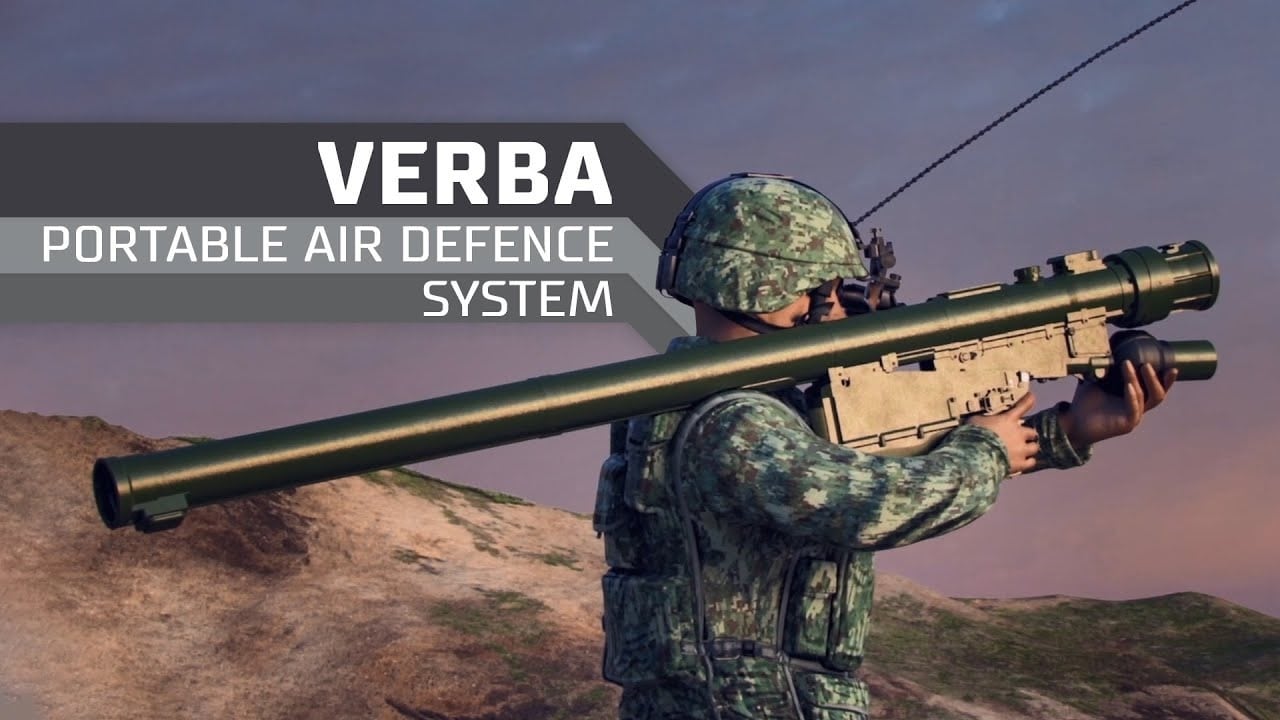The Russians Have Their Own Stinger But It Isn’t Dominating the Skies: You’ve heard of the Stinger – an anti-aircraft missile system that Ukraine has used against Russian fighter jets and helicopters. But Russia has a man-portable air defense missile system (MANPAD) too. It’s called the Verba, and it is a next-generation MANPAD that is more modern than the Stinger and in some ways more advanced.
The Verba Anti-aircraft Weapon Had a Good Track Record Before the Invasion
The Verba had success in the Donbas against the Ukrainian air force before the invasion – shooting down so many aircraft that the Ukrainians paused their flights. But the Verba and other Russian air defenders have not dominated the skies as they were expected to during the broader phase of the war post-invasion.
Russia’s Most Modern MANPAD
The Verba 9K333 (Willow) MANPAD has been in the Russian air defense inventory since 2014. It’s an all-weather/ day-night MANPAD. Russians claim the Verba can not only destroy low-flying aircraft but also drones and even cruise missiles. The Russian armed forces began testing the Verba in 2011. It was first deployed years later with Russian airborne troops. The Verba is designed to replace the Igla-S MANPAD that also has a fire and forget infrared seeker.
Verba Can Be a Part of a Robust Anti-Aircraft Network
The Verba is a step up because it is integrated with sensors and radar from other anti-aircraft systems allowing the MANPAD to defend from enemy air targets in depth. The sensor data from the integrated unit is processed through the Verba’s fire control mechanism while the target is locked in. The integrated system also allows the Verba to take on multiple targets at one time.
Watch Out When a Verba Locks On to Target
The fire control has “trifecta” multi-spectral infrared guidance. There are three seekers and “spectral regions – ultraviolet, near-infrared and mid-infrared,” according to Army Technology. It can sense heat on wings and on the fuselage of airplanes – not just heat from its engine.
It also can avoid aircraft counter-measures such as flares. This allows the missile to go after targets with low levels of thermal radiation at a range of up to 2.8-miles with an eight-second reaction time.
If the soldier is moving, he can stop and fire within 12-seconds of targeting an aircraft.
Verba Scored Many Wins Against Ukrainian Aircraft Prior to the Invasion
The Verba and Igla, integrated with other surface-to-air missiles, chalked up many wins in 2014 in the Donbas region. Pro-Russian separatists and Russian soldiers eliminated “three Ukrainian Mi-24 attack helicopters. The following month, the separatists downed an Mi-8 transport helicopter, an An-30 reconnaissance plane, two airlifters (an An-26 and an Il-76) and three Su-25 attack planes,” according to Forbes.
It’s a Head Scratcher
Why isn’t the Verba dominating the air war today?
The main reason is that the Russians are simply giving up and abandoning some of their most modern and valuable equipment. This video shows the automation kit from a Verba MANPAD captured by the Ukrainians. The Russians apparently just left it sitting on the ground. Moreover, three Verba launchers were found abandoned in Gostomel on March 7.
The Verba Should Be Dominant
The loss of the Verbas is an unexpected development since the MANPAD is so easy to use. Operators essentially have to point it at a target and the missile seekers do the rest. The Russians should be downing Ukrainian aircraft right and left. But the Russians have not achieved air superiority. Meanwhile, the Verba is falling into Ukrainian hands.
Badly-led Conscripts Are Giving Up
This belies a larger trend in the war. Some Russian soldiers have low morale and have lost the initiative. They aren’t taking pride in the profession of arms. Many are conscripts who have no leadership from professional non-commissioned officers (NCOs). No self-respecting NCO would let his soldiers just leave high-powered weaponry on the field of battle for the enemy to take. But this is happening in Ukraine.
Now serving as 1945’s Defense and National Security Editor, Brent M. Eastwood, Ph.D., is the author of Humans, Machines, and Data: Future Trends in Warfare. He is an Emerging Threats expert and former U.S. Army Infantry officer. You can follow him on Twitter @BMEastwood.

